The problems with the vascular system of the legs are in more than half of the population of the planet. The greatest discomfort gives patients with varicose phlebologist veins. The pathology is characterized by a decrease in the tone of the walls of the blood vessels and the expansion of their light. As a result of the relaxation of the foot, the reverse blood flow in the human body is disturbed. In what complications entails varicose veins and how to fight them correctly, we understand under our material.
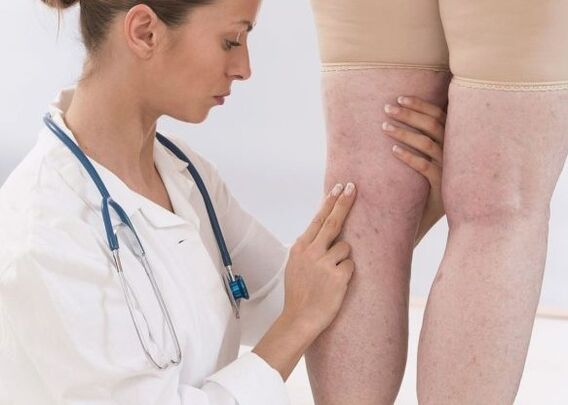
General characteristics and causes of varicose veins
The caps in the functioning of the vascular system of the legs are initially formed against the background of the improper operation of the venous valves. Here it is worth knowing that because of the force of gravity, the blood from the heart flows freely in the lower limbs. In the opposite direction, the blood flow moves under the influence of natural pressure, which creates the walls of healthy vases. This wave is sufficient to overcome the power of earthly attraction.
If the tone of the blood vessels is disturbed, the body makes all possible efforts to push the blood towards the vases. That is, for this reason it increases independently of blood pressure (blood pressure). From these "efforts", the venous valves work worse, without completely closing the wings at every blow of the human heart. In this case, the blood is actively inserted by deep veins in the surface ones, which causes their further filling.
The causes of the varicose veins of the lower ends are the following factors:
- Inheritance (transmission of the disease through a male or female line).
- Hormonal malfunctions against the background of autoimmune processes, pregnancy, childbirth or diseases of the reproductive system.
- A sedentary type of activity or vice versa, associated with a long position on the legs.
- A sedentary lifestyle.
- Excess weight (obesity).
- Power exercises with lifting weights from a session or squat.
- Smoking and drinking alcohol.
- Long stay under the straight rays of the sun.
Symptoms and the first signs
The symptoms of varicose veins may vary to one degree or another intensity according to the general conditions of the patient and the stage of the course of the disease. In addition, the signs of the pathology are not always obvious. The only common feature for varicose veins is a condition called the term "heavy legs". That is, at any phase of the pathology, the patient feels the severity of the legs at the end of the working day or even in the morning after sleep.
Stadium I and II of varicose veins: signs and symptoms
The initial stages of the vascular pathology of the legs are characterized by peculiar signs. So, in 1 stadium, the following symptoms are noted:
- a vascular motif in the form of stars or a beat of eyelashes on the legs;
- swelling of the legs after wearing shoes and even socks;
- Night cramps in the calf muscle;
- Fatigue and heaviness in the legs.
In 2 phases of pathology, the patient forms the following symptoms:
- swelling of the veins after having prolonged to walk in uncomfortable shoes or after a prolonged position;
- Display of ships enlarged in the volume of ships;
- protruding and protruding knots in the veins of the legs;
- itching in places of inflamed veins;
- redness of the skin.
Stadium III and IV of the varicose veins
Progressive varicose veins are already characterized by signs of complications. The image seems to follow:
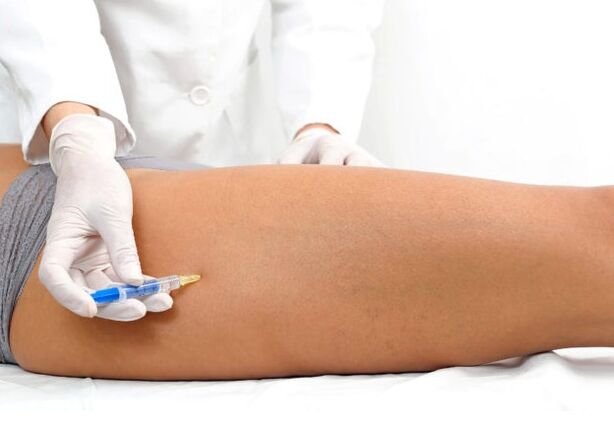
- Phase 3Sometimes it can fall by the morning.
- Phase 4. The patient in the redness of the skin begins with the beginning of the ulcerative formations. The place of the future trophic ulcer is covered by whitish, as if with a lacquered plate. During his injury, an ulcend trophic is opened, which almost constantly exudes. The situation is dangerous as ulcers can be infected a second time, this leads to the suppuration of the inflammation sites.
When to see a doctor and what
At the first symptoms of the initial phases of the varicose veins, it is necessary to contact a phlebologist. This doctor is engaged in blood vessels. If there is not such a doctor in your clinic, you can get a consultation with an angiosurge or just a surgeon. It should be understood that in the initial stages to stop the development process of varicose veins with conservative methods it is completely possible. The competent tactics of the treatment and respect for all the prescriptions of the doctor will allow you to feel the lightness again in the legs.
Diagnostics
For a competent and effective treatment of varicose veins on the legs, it is initially necessary to make an accurate diagnosis. That is, to identify the degree of vascular problem. For the diagnosis of pathology of the veins on the legs, the following methods are used:
- Visual examination of the patient's legs with compulsory palpation of visible vases.
- Ultrasonic dopplerometry or floometry, which allow the doctor to estimate the speed of the blood on the pots and the total occupation of the veins of the foot.
- Scan of legs of the legs. In addition, it allows you to evaluate the status of the valve system and the veins themselves.
- Thermography. In this case, infrared radiation are used for diagnosis.
- Ecosclerotherapy. The essence of the methodology is the introduction of a sclerosing substance in small doses and a further examination of ships for inflamed places.
- Flobography is computer. The technique has the principle of standard magnetic resonance imaging.
- Fleboscintigraphy. Here, experts use special radionuclides to study the lymphatic and venous systems of the legs.
Methods of treatment of the lower limbs
Drug therapy
You can treat varicose veins in the initial stages with the help of drugs. It is quite effective. The type and name of the drug are selected according to the severity of the patient's condition.
For external use (local), a phlebologist can prescribe drugs in the form of gel, creams or ointments.
Furthermore, for oral administration, anticoagulant preparations are prescribed, which successfully thin the blood and prevent the formation of blood clots.
Against the background of targeted therapy, the patient is prescribed for the treatment of varicose veins that support the work of vascular and circulatory systems. Therefore, such drugs and additives are shown:
- Vitamins. In particular, vitamin C and vitamins of group V.
- Ointments are anti - -nonflammatory non -pounds. Perfectly remove the inflammatory process and reduce skin redness.
- Angioprotectors. Assign to improve the tone of the veins and reduce the permeability of the capillaries.
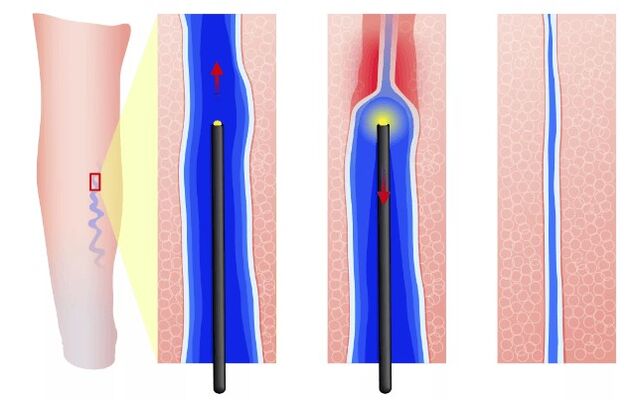
Surgical treatment of varicose veins with minimally invasive and full operational methods
In the 3-4 phases of the varicose veins, surgery is indicated to remove patients with vases that interfere with normal blood flow. Depending on the patient's initial state, one of the minimally invasive techniques or complete surgery can be used.
Sclerotherapy
This type of non -surgical procedure consists in the introduction of special sclerosantia (phlebosclerosis substances) in the lumen of the veins. Their base is the alcohol. As a rule, all these drugs are strictly intended for intravenous administration by injection. These substances cause the destruction of the endothelial general layer (internal) of the ship and its further narrowing (sclerosis). Consequently, the ship's light is significantly reduced or completely glued.
Very often, doctors use these drugs:
- Fatty acids in soap and salt. These are Vacoricides, Silpisole, Satradikol, Trombovar or Varicosano.
- Cellular poisons. This is a chinin with urettano, a skilled 1-5 %solution, Vistaril, etc.
- Hypertonic compounds that dehydrate the intimacy of the veins. The sodium salicylate solution is 20-40 %, 30 %sodium bromide, 24 %sodium chloride.
- Organic cauterization solutions. Ethyl alcohol, 66 %glucose solution or steed.
Combined phlebectomy
This surgery technique implies the use of different techniques simultaneously. But first of all, the patient in a vertical position marks the position of all the inflamed veins to be removed. The marking is performed under the control of the ultrasound of the legs of the legs.
With complex phlebectomy, the following surgery phases are used:
- Crossed. Otherwise, the procedure is called the Medication and parallel intersection of the small and/or large subcutaneous vein. The dressing is performed in the area of sauces with deep leg pots. The Crocectomy is performed by cutting the format formed in the area of the inguinal fold. Its length is 3-5 cm. Then the surgeon notes a large subcutaneous vein until he falls into the femoral and pulls the vene-spouts. The BPV trunk (large subcutaneous vein) intersects. Only his stump remains about 5 mm. So, from that inguinal section, the surgeon leads the following phase of the operation - stripping.
- Stripping. Or, otherwise, the removal of the trunks of a large or small subcutaneous vein. It is performed through two endoscopic cuts located on both edges of the inflamed vein. In this case, an inguinal cut is already there. Through it, a special probe is introduced into the cavity of a painful ship, which has a special thick olive with a cutting edge at the end. The probe moves until the end of the area of the inflamed ship and is sewn there. Then the surgeon pulls the sick ship, as if he turned it out. At the same time, the olive cuts the vein from the surrounding fabrics and capillaries. This method of removing the sick vein is the most reliable, but at the same time very traumatic, since the surrounding ship of the fabric suffers.
- Liquidation (seasoning) of perforating veins. In this case, the surgeon simply binds the piercing veins through small cuts on the skin with a size of 1-2 cm.
- Miniflectomy. The method for removing varicose veins (small areas) and varicosis nodes through small endoscopic sections. It is performed if it is not necessary to remove a large or small subcutaneous vein.
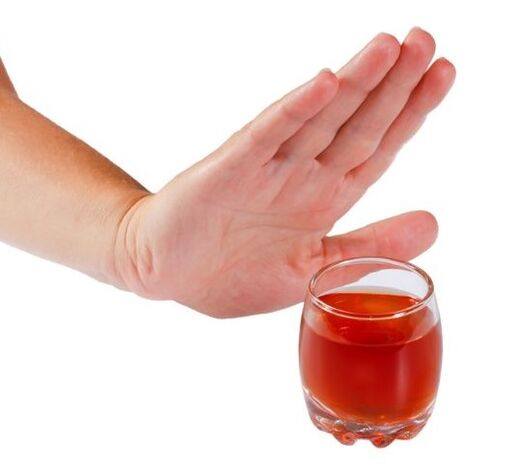
Conservative treatment
Diet in the treatment of varicose veins
To increase the tone of the walls of the blood vessels and significantly dilute the blood, it is necessary to reconsider the diet. You should refuse these products:
- Alcohol in any form
- Fatty and smoked dishes,
- Excess grenades,
- Refined fat oils.
To improve the status of the veins on the legs, you can and you should eat such products:
- The onions are on
- Honey,
- grape
- tomatoes,
- Fruits and berries for the season.
An abundant regime of drinking at the rhythm of 30 ml of water for 1 kg of patient weight is also shown.
Refusal of smoking
It is important to understand that smoking contributes to the formation of blood clots and significantly violates blood coagulation. At the same time, not only the components of the blood, but also the walls of the blood vessels. Their elasticity is significantly reduced, which does not play at the hands of a patient with varicose veins. Therefore, in order not to aggravate the situation, it is necessary to abandon the pernicious habit as soon as possible.
In compression underwear (socks, golf, tights)
The compression knitwear is one of the effective ways to prevent further progression of varicose veins. This linen (golf, socks and tights) evenly distributes the intensity of the blood flow towards the heart. Consequently, the load on the walls of the vessels is significantly reduced and the lumen of patients with veins is returned to a relatively normal state. It is very important to understand that the compression formula incorporated into the knitwear repeats exactly the load that the calf muscles can form during an intense movement of the legs. That is, the blood in the veins of the lower ends does not restore even with a sedentary lifestyle. At the same time, all compression underpants in terms of compression intensity are classified in 4 types:
- Preventive knitwear. It has a compression level from 10 to 18 mm hg. Art. It is indicated to wear people with a genetic predisposition to varicose veins.
- The first class of knitwear. The degree of compression in this case is 18-22 mm hg. Art. It is used in the initial phase of varicose veins and for the prevention of varicose veins with improved physical effort with weight lifting or with excessive body weight.
- The second class of knitwear. Compression level - 23–32 mm hg. This linen is suitable for thrombophlebitis or varicose veins, formed against the background of surgery.
- The third class of knitwear. The compression here is 33–46 mm hg. Art. Shown by trombosis deep vein or after operations.
- Fourth grade. Elastic linen has a compression degree of 49 mm hg. Art. This knitted clothing is worn in serious shapes of thrombosis or with lymphostasis to improve lymphatic drainage.
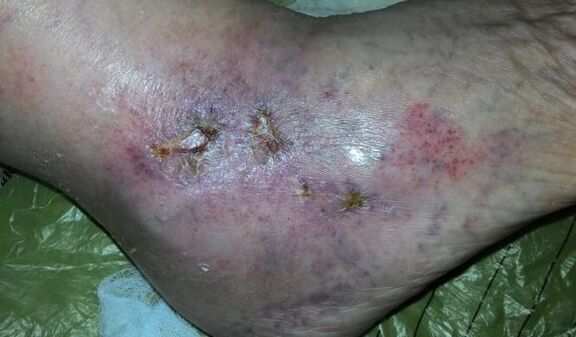
Folk methods for the treatment of varicose veins
If the varicose veins have not given complications and the treatment of the pathology is performed only drugs, then it can be used as therapy and popular methods. In addition, it is possible to use both compresses and dyes for oral consumption. Below, consider the most popular variants of the popular treatment of varicose veins.
Herbal and dyes taxes
To use homeopathy, you can use such herbs and plants:
- Chestnut. The tincture is prepared by it. Pour 10 g. Cooled chestnut fruits 100 ml of vodka. Everyone is placed in glass containers and insisted for about 10 days in a dark place. The mixture is periodically agitated. After the deadline, the agent is joking and taken 15-20 drops a day before meals (in the morning and evening).
- Ceilandi. A bandage is wet in the plant juice and is applied in the form of a compress. The bandage is fixed for 4 hours, then washed with hot water. The course of therapy is a week. After that, take a break for 10 days and repeat the treatment. The complex is three of these courses.
- Fern. Here they take acid milk (3 tablespoons of canteen) and dry grass (3 tablespoons of dining rooms). Everything is mixed and distributed according to the gauze. The bandage is applied to the painful leg and fixed with a bandage for three hours. This treatment technique is best used in the evening before bedtime.
- Chamomile pharmacy. A decoction is made by the plant (2 tablespoons of grass are positioned on a glass of boiling water). Subsequently, the product insisted for 30-40 minutes and PZHED. The finished infusion is used as a compress liquid. Chamomile removes vascular stars and similar models well.
Conclusion
It is worth remembering that varicose veins: the pathology is irreversible. Therefore, now it is advisable to think about the health of the legs and basically change the lifestyle. Remember, the health of the legs depends only on you. Especially if there is a predisposition to the development of the pathology.
